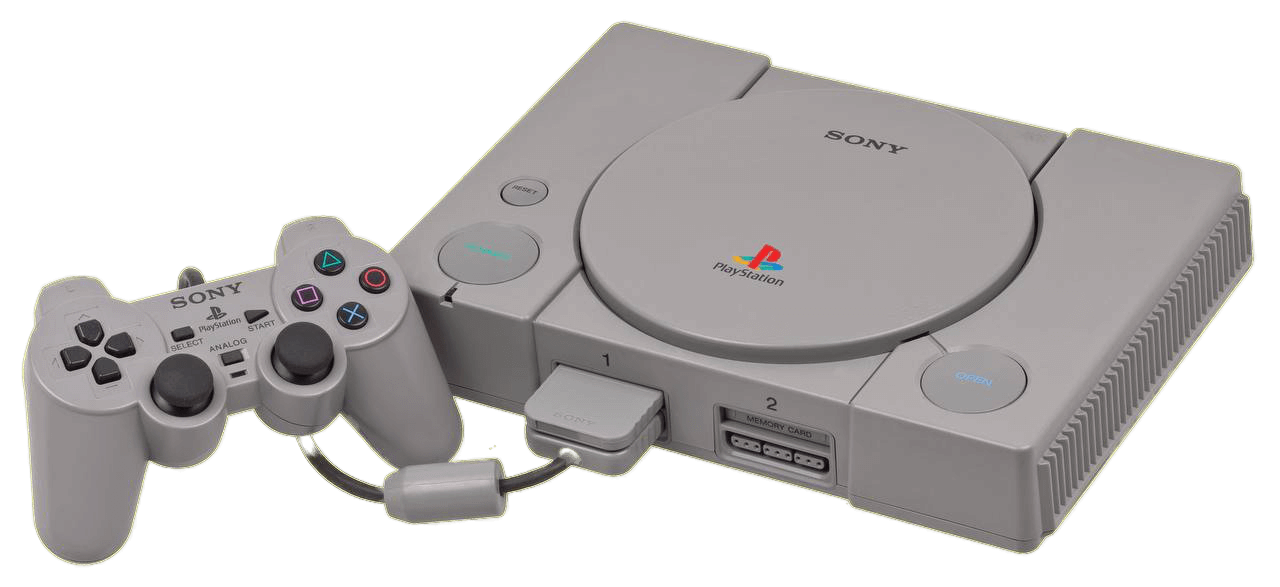
The original PlayStation, launched in Japan in 1994 and globally in 1995, was Sony’s bold entry into the gaming industry—and it changed everything. Originally conceived as a joint project with Nintendo to create a CD-based SNES add-on, the partnership fell apart, prompting Sony to develop its own console. The result was a sleek, disc-based system that leveraged 3D graphics, cinematic presentation, and a developer-friendly architecture. With a strong emphasis on mature storytelling, immersive audio, and cutting-edge visuals, the PlayStation helped transition gaming from child-focused entertainment into a full-fledged mainstream medium.
The PS1’s library was groundbreaking and diverse. Titles like Final Fantasy VII, Metal Gear Solid, Resident Evil, and Castlevania: Symphony of the Night pushed narrative and technical boundaries, while Gran Turismo, Tekken, Crash Bandicoot, and Tony Hawk’s Pro Skater became cultural icons. Sony’s use of CD-ROMs allowed for richer multimedia experiences, voice acting, full-motion video, and expansive content compared to cartridge-based competitors like the Nintendo 64. With aggressive third-party support, stylish branding, and accessible development tools, the PlayStation built an unprecedented ecosystem for developers and gamers alike.
Selling over 102 million units worldwide, the PlayStation became the first console to break the 100-million mark, firmly establishing Sony as a dominant force in gaming. It reshaped the industry, dethroned traditional rivals like Sega and Nintendo, and laid the foundation for the multimedia-driven gaming landscape of the 21st century. Even today, the original PlayStation is remembered for its genre-defining titles, technological leap, and cultural impact—ushering in the modern era of console gaming with authority and style.
PlayStation (PS1) Technical Specifications
| Component | Specification |
|---|---|
| CPU | 32-bit MIPS R3000A @ 33.8688 MHz |
| Graphics | Custom Sony GPU, 16.7 million colors (24-bit), 360,000 polygons/sec |
| Resolution | 256×224 to 640×480 |
| Sound | 24-channel ADPCM stereo, CD-quality audio, MIDI support |
| Media | CD-ROM (up to 700MB per disc) |
| Memory | 2 MB RAM, 1 MB VRAM, 512 KB sound RAM |
| Controllers | Digital controller (DualShock analog introduced later with rumble support) |
| Storage | Memory Card (128 KB per card, 15 blocks) |
| Release Date | 1994 (Japan), 1995 (North America and Europe) |